The Falls City StaTab Can: 1975
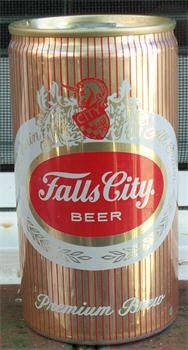 |
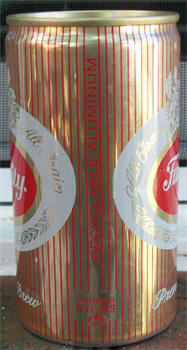 |
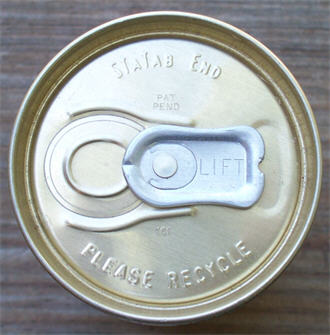 |
In this issue I want to show you the first beer can produced with a StaTab. It's a Falls City from Falls City Brewing in Louisville, Kentucky. I discussed the Falls City Brewery back in 2005 when I featured one of their flat tops from 1940. Let’s jump ahead a few decades and look at a more modern can.
The pop top can (or pull tab) was introduced in 1962 and by 1965 was found on most beer cans, including those from Falls City. However, people often just tossed the ring and the tab away. This not only created more litter, but people could cut their foot stepping on one, like Jimmy Buffett sang about in Margaretaville. People sometimes dropped the pull tab into the can then accidentally swallowed it.
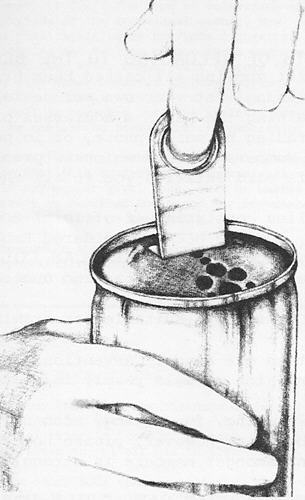 |
Several can companies experimented with ways to replace the pull tab. Crown Cork and Seal tried a top that you pressed down then slid a tab to one side, pushing a hole into the can top. Continental’s Envir-o-can required the consumer to pull a metal strip from the top of the can, revealing several small holes in the top from which to pour the beer. (see illustration at left), The peeled-back strip then folded over out of the way. Neither of these, nor other experimental methods caught on. American Can tried a two button system in which the drinker pushed two small buttons into the top of the can. Coors and several Canadian brewers used this type but it didn’t catch on. Some customers found it impossible to open. Coors’ ownership was determined to make it work, but their unique top was hurting sales. In the end even Coors reluctantly abandoned it. (And no, cans with the button top are not rare and are not worth more, sorry) |
Daniel Cudzik of Reynolds Metals Company (now the Alcola Corporation) in Richmond, Virginia invented a new, easy to use opening in which the drinker only had to lift a tab to create an opening. The tab then was pressed back flat against the can lid. Reynolds named it the “Sta-On-Tab.” When Falls City adopted the opening in late 1975 they named their version the “STaTab” and this is still the name commonly used today (minus the extra capital T). Falls City test marketed cans with the new opening in December 1975 in West Virginia. (According to an article from the Baltimore Sun, they tested in Florida, West Virginia, Louisville, and "one area in the southwest").
This makes the StaTab one of many innovations test-marketed in an area on the fringe of the adopting brewery’s market area. That way, if the product failed it had less chance of damaging the company’s main market although if they did test in Louisville, then they also tested in the heart of their main market at the same time(!). New Jersey’s Krueger tested the first beer can in Richmond, Virginia in 1935. Pittsburgh’s Iron City gave the first pull tab its trial run in Staunton, Virginia in 1962. In each case, once the test was deemed successful, the brewery marketed their product closer to home with the new package.
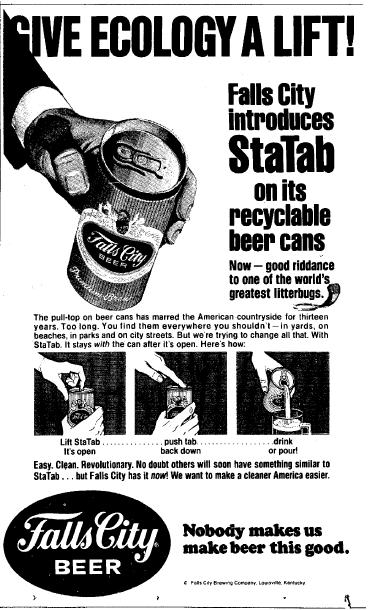 |
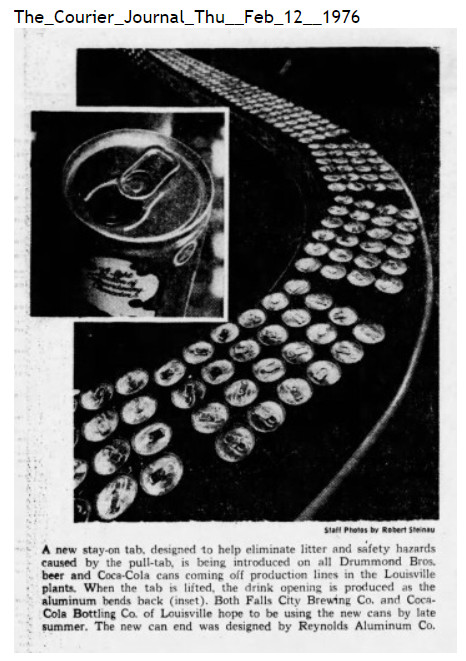 |
| A December 1975 advertisement for the Statab. | Photo of the Drummond Brothers cans with the StaTab |
| Customers in the test area liked the new opening and Falls City quickly adopted it for most of their marketing area for their new beer, Drummond Brothers. They then began using StaTabs on all their Falls City cans. The StaTab caught on, although not quite as quickly as the pull tab originally had. By the early 1980s, more breweries adopted it. Soda companies did too. 7-Up tested it first. Then Coke adopted it. The Coke can shown here (below) is from 1976 and it included opening instructions to show consumers how to use the new opening on the side of the can, reminiscent of the instructions printed on the side of many beer cans from 1935 until the early 1950s. One factor that delayed the adoption of the new invention was the rising price of aluminum. Aluminum prices doubled from 26 cents to 48 cents per pound from 1973 to 1976. This meant that steel ends were often more economical for breweries to use than aluminum. Initially the StaTab was intended for aluminum tops which were lighter and took less effort to open with the levered tab than a steel lid. Moreover, many areas were started to recycle and cans that were a mixture of steel body and aluminum tops were not as easy to process as cans that were either all steel or all aluminum. Steel ends with the StaTab solved this problem, but they were not immediately available. |
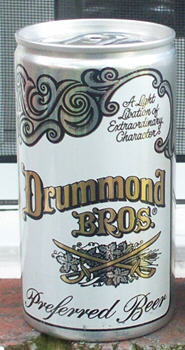 |
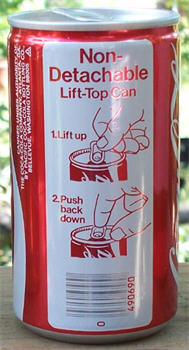 |
By the late 1980s, however, aluminum cans had taken over the beverage can market. The last straight-steel (3-piece) steel can for beer was filled in 1984 by Cold Spring Brewing in Minnesota. The last steel beer can (a 2-piece can) was filled by Iron City in 1993. The pull tab now went the way of the cone top, the crowntainer, and the flat top can as obsolete. Unfortunately for Falls City, it too became obsolete when the brewery closed in 1978 although the brand has appeared again as a craft beer, but it can claim an innovation in canning.
|
Sources Used
Baum, Dan, Citizen Coors (2001)
BCCA, Beer Can Collectors News Report (March 1975)
BCCA, “75 Cans, 75 Years” Beer Cans & Brewery Collectables (February/March 2010)
“New Can Top at Falls City” The Brewers Digest (March 1976)
"Cans get 'stay-on' tabs" The Baltimore Sun (November 20, 1975)
Thanks to Brian L. for the Falls City can and to Keith K. for the Drummond Brothers canning line photo plus some of the press articles!
